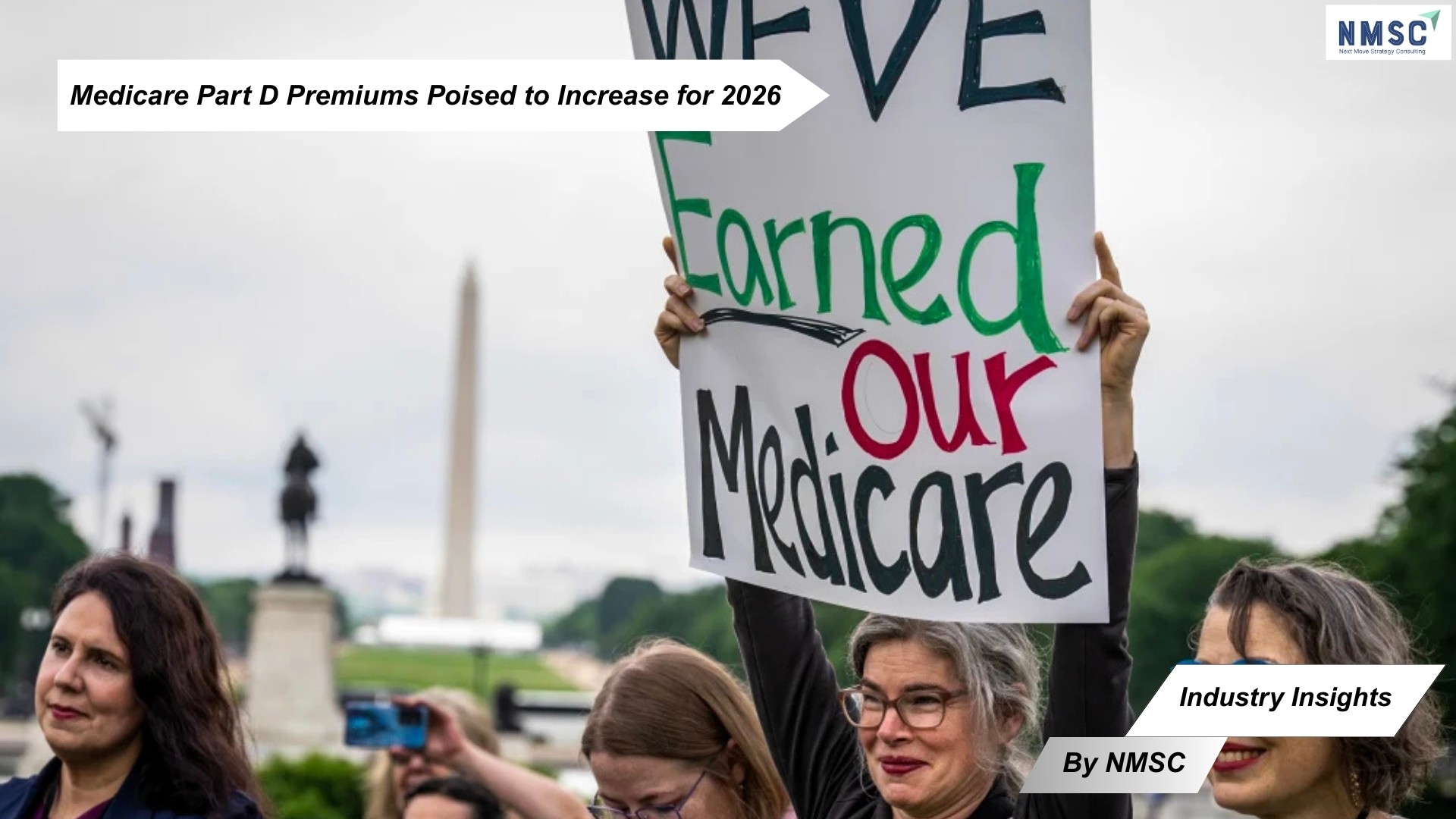Medicare Part D Premiums Poised to Increase for 2026
Published: 2025-08-16

Industry Insights from Next Move Strategy Consulting
Millions of Medicare beneficiaries who purchase the optional Part D prescription drug benefit could face substantially higher monthly costs when they shop for 2026 plans. Insurers are permitted to raise premiums by as much as $50 a month next year, and plan price announcements will appear closer to open enrollment, which begins Oct. 15.
Policy analysts point to a combination of sharper drug spending, newly capped out-of-pocket costs for beneficiaries, and reduced federal stabilization payments as the core drivers behind the expected increases. While it remains uncertain how many insurers will seek the full allowed increase, experts say beneficiaries should actively compare options during open enrollment rather than automatically keeping their current plans.
Why premiums may climb
1. Rising drug spending and use
Insurers set premiums based on expected drug costs and how often medications are used. In 2024 overall spending by insurers and public programs for prescription drugs rose by more than 10%, driven largely by new, high-priced medicines and greater utilization — notably for costly weight-loss therapies and drugs for autoimmune conditions. Even though aggregate drug prices showed a modest decline in 2024, spending climbed because of new product introductions and broader use of expensive therapies among beneficiaries.
2. New out-of-pocket cap shifts costs to plans
A major change this year caps annual out-of-pocket spending on prescription drugs at $2,000 for Medicare enrollees. Established in the Inflation Reduction Act, that cap protects people who need very expensive medications but moves a larger share of costs onto insurers. As a result, plans may spread higher expenses across all members through higher premiums.
“Everyone should shop plans in open enrollment,” said Stacie Dusetzina, a professor of health policy at Vanderbilt University Medical Center, stressing that beneficiaries should not automatically remain in their existing stand-alone drug plans.
Experts also note that some plans now require enrollees to pay a percentage of a drug’s cost instead of a flat copay, which can produce unexpectedly large pharmacy bills. While the $2,000 cap benefits people who regularly reach high drug costs, others pay higher premiums now to protect themselves against potential future need for expensive treatments, said Casey Schwarz of the Medicare Rights Center.
3.Smaller federal stabilization payments this year
To soften the financial impact of the new law on insurers, the federal government began a stabilization program that provided extra funding to Part D plans. That program distributed just over $6 billion to insurers this year and contributed to a drop in the average monthly premium for stand-alone Part D plans from $43 last year to $39 this year, KFF found.
The Biden-era stabilization payments this year averaged $15 per enrollee. In a late-July memo, the Trump administration said it would continue the program but reduce funding by about 40%. The plan for next year will provide $10 per enrollee and will allow insurers to raise premiums by up to $50 a month, up from the $35 maximum permitted this year. Administration officials told The Wall Street Journal that the cutback was intended to avoid large taxpayer costs that primarily benefited insurers.
Juliette Cubanski, deputy director of the program on Medicare policy at KFF, warned the funding change could materially affect premium pressures and noted the growing tilt toward Medicare Advantage plans, which receive higher payments and often use rebates or additional benefit dollars to limit the drug-cost impact on members.
Where Advantage plans fit in
Premium increases are expected to hit stand-alone Part D plans more than the drug coverage embedded in Medicare Advantage. Advantage plans typically receive larger payments from Medicare than traditional Medicare costs taxpayers, which gives private plans more room to add benefits (vision, dental) or cushion rising drug spending without a comparable hike to the drug portion of premiums. That difference is contributing to a widening cost gap that may make traditional Medicare plus a stand-alone prescription drug plan harder for some enrollees to afford, analysts say.
Looking ahead
Insurers will reveal final premium figures closer to open enrollment. While some plans raised premiums up to the earlier $35 monthly maximum this year, analysts say it is plausible that some will seek the larger $50 increase allowed for 2026. Beneficiaries and advocates are watching closely as the interplay of drug utilization trends, the $2,000 cap, and reduced federal stabilization payments shapes next year’s marketplace.
Source: https://www.nbcnews.com/health/health-care/medicare-part-d-premiums-increase-2026-rcna224592
Prepared By: Next Move Strategy Consulting
















Add Comment